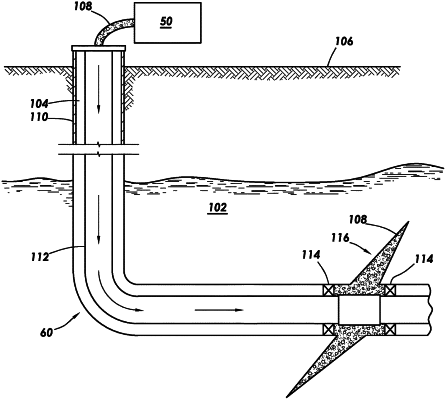| CPC C09K 8/24 (2013.01) [C09K 8/68 (2013.01); E21B 21/00 (2013.01); E21B 43/26 (2013.01); C09K 2208/12 (2013.01)] | 9 Claims |

|
1. A method of fracture stimulation comprising:
introducing an anionic friction reducer and an additive comprising a salt, a cationic shale inhibitor, and an anionic shale inhibitor into a treatment fluid, wherein the cationic shale inhibitor is present in the additive at a ratio of about 1:2 to about 1:5 by volume of the anionic shale inhibitor,
wherein the cationic shale inhibitor is selected from the group consisting of:
polydiallyldimethylammonium chloride; a cationic polyamine; a quaternary ammonium salt; and any combination thereof,
wherein the anionic shale inhibitor is selected from the group consisting of: polyacrylamide polymer, copolymer, or terpolymer; polyacrylic acid; polyacrylamide copolymer; a block copolymer of polyacrylamide and 2-acrylamido-2-methylpropane sulfonic acid (AMPS); 2-acrylamido-tertbutylsulfonic acid (ATBS); poly(acrylamide-co-acrylic acid); and any combination thereof;
wherein the salt is selected from the group consisting of: calcium chloride, sodium chloride, potassium chloride, calcium bromine, ammonium chloride, ammonium nitrate, sodium acetate, and any combination thereof;
wherein the cationic shale inhibitor is present in the additive in an amount of about 2% to about 5% by weight of the additive;
introducing the treatment fluid into a wellbore penetrating at least a portion of a subterranean formation that comprises shale at or above a pressure sufficient to create or enhance one or more fractures in the subterranean formation; and
allowing the additive to interact with the shale in the subterranean formation to at least partially inhibit the shale.
|